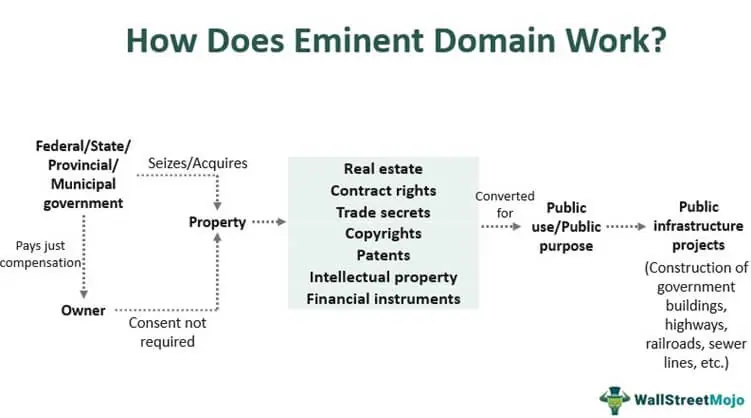Eminent Domain Meaning and Types
Eminent domain refers to the power of the government to take private property for public use, with just compensation provided to the property owner. This power is derived from the Fifth Amendment of the United States Constitution, which states that private property shall not be taken for public use without just compensation.
There are several types of eminent domain, each with its own specific characteristics:
1. Condemnation
Condemnation is the most common type of eminent domain. It occurs when the government takes private property for public use, such as building roads, schools, or parks. The property owner is entitled to fair compensation for the value of the property taken.
2. Inverse Condemnation
Inverse condemnation occurs when a property owner sues the government for taking their property without going through the proper eminent domain procedures. This can happen when the government’s actions result in a de facto taking of the property, even if no formal condemnation process was initiated.
3. Regulatory Taking
It is important to note that eminent domain should only be used for public purposes and with just compensation provided to the property owner. The government must follow proper procedures and provide a fair valuation of the property taken. If a property owner believes their rights have been violated, they have the right to challenge the taking in court.
What is Eminent Domain?

The Process of Eminent Domain
The process of eminent domain typically involves several steps. First, the government must determine that there is a legitimate public purpose for taking the property. This can be done through a public hearing or by passing a resolution or ordinance. Once the public purpose is established, the government must provide the property owner with notice of the intended taking and an opportunity to be heard.
It is important to note that the government cannot take private property without providing just compensation to the owner. Just compensation is typically determined by the fair market value of the property at the time of the taking. In some cases, additional damages, such as relocation expenses or loss of business, may also be awarded.
Challenges and Controversies
Eminent domain is a controversial power, as it involves the government taking away private property rights. Property owners often feel that they are not being adequately compensated for their loss, while government officials argue that eminent domain is necessary for the public good. There have been numerous legal challenges to eminent domain cases, with some property owners successfully arguing that the taking was not for a legitimate public purpose or that the compensation offered was not just.
| Advantages of Eminent Domain | Disadvantages of Eminent Domain |
|---|---|
| Allows for the construction of public infrastructure | Can result in the loss of private property rights |
| Can promote economic development | Can lead to disputes and legal challenges |
| Provides compensation to property owners | Can be seen as an abuse of government power |
Types of Eminent Domain
1. Condemnation: This is the most common type of eminent domain, where the government takes private property for public use. The property owner is typically compensated for the fair market value of the property.
3. Regulatory Takings: This occurs when the government imposes regulations or restrictions on the use of private property, effectively diminishing its value. While not a direct taking of the property, it can still result in a loss of value for the property owner.
4. Partial Takings: In some cases, the government may only take a portion of a property through eminent domain. This can occur when the government needs a portion of the property for a public project, such as a road or utility line.
5. Temporary Takings: This type of eminent domain allows the government to take private property for a temporary period. This is often done for public projects, such as construction or repairs, where the property will be returned to the owner once the project is completed.
6. Quick-Take Takings: Quick-take takings allow the government to take immediate possession of the property before the compensation is determined. This is typically done in urgent situations where delay could cause harm or hinder a public project.
7. Land Banking: Land banking occurs when the government acquires property through eminent domain for future use. This can be done to secure land for future development or to prevent private development that may be detrimental to the public interest.
8. Blight Condemnation: Blight condemnation allows the government to take property that is deemed blighted or in a state of disrepair. This is done to promote redevelopment and revitalization in areas that are considered blighted.
9. Public Necessity: Public necessity is a broad category that encompasses any situation where the government needs to take private property for a public purpose. This can include projects such as highways, schools, parks, or other infrastructure.
It is important for property owners to understand the different types of eminent domain and their rights in order to protect their interests. Consulting with a legal professional experienced in eminent domain can help property owners navigate the process and ensure they receive fair compensation for their property.

Emily Bibb simplifies finance through bestselling books and articles, bridging complex concepts for everyday understanding. Engaging audiences via social media, she shares insights for financial success. Active in seminars and philanthropy, Bibb aims to create a more financially informed society, driven by her passion for empowering others.
